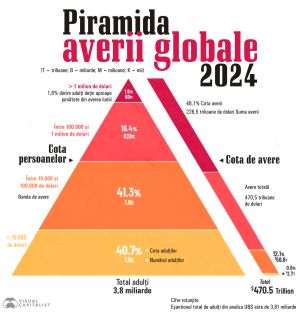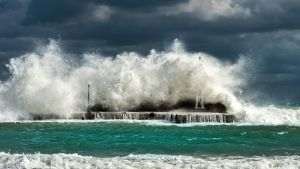All the great mythologies, all the fundamental books of the religions testify that the "historical" world begins with a conflict in which at least one of the parties uses a weapon to cause the demise of their competitor, the result being a violent death and, last but not least, a victory. Our globalized, over-technologized world, the world about to exceed its planetary limits, a world of historical contrast, syncope and incompatibility, does not contradict at all this paradigm. The map of conflicts does not leave too many blank areas when overlaid upon the map of the world.
The classic conflicts, which we used to call wars, in which two or more states were disputing territories, control over strategic points and transportation routes, be them on land or water, riches of the subsoil or simply the pre-emptive right to the mirage of power have made room for intrastate conflicts. The state is systematically massacring its citizens for a variety of motives, ranging from ethnic and religious to power legitimization. Tension remains high also on the borderlines, which are often arbitrarily drawn between neighbours who see each other as competitors, if not even historical enemies, which is the case of the Israeli - Palestinian conflict, or the Indo-Pakistani conflict.
In the recent years, the major powers have started to use conflicts as an opportunity to arbitrarily maim smaller countries, defenceless countries, in the name of the paradoxical excuse of "solving conflicts." From Kosovo to Abkhazia and Ossetia, conflicts are beginning to shape a new world map, just as arbitrary as the one they are supposed to correct. Of course, terrorism, used as a political weapon, is nowadays the most spectacular cause of a type of conflict that used to be considered either an absolute novelty or a mere contemporary remake of the great religious wars.
All the weapons ever invented in history are good enough to make the conflicts of the globalized world just as bloody as the mega-conflicts of the 20th Century. From clubs and stones, bows and arrows, machetes or swords to sophisticated anti-personnel weapons, unmanned aircraft and intelligent munitions launched from thousands of kilometres afar or even shells and grenades, everything is good enough in modern conflicts.
The only constant is the cost of this impressive arsenal of killing tools. Always growing, always barely affordable to those using them, always a great source of debt to those delighted to buy them and always a method of transferring political control between those who make and sell them to those who buy them and use them in the conflicts interesting to them.
The victims of conflicts in the new global village of today are especially civilians, women, children, people, communities that are not actually part of the conflict. And the number of graves is not smaller or, as the case may be, the mass graves are not at all less populated than they used to be in the 19th or 20th Centuries.
Who could have imagined that a "local conflict" taking places under the very eyes of an "international peacekeeping force," a conflict primarily fought with machetes and World War II rifles could produce nearly one million victims in just a few months? And yet it did, in Rwanda, while the "international community" remained relatively idle: they could not prevent it or find a legal, solid, stable solution to it after the disaster had already occurred.
As for the profits generated by the macabre spectacle of conflicts, arms and corpses on a planetary stable, they are quite stable, if not rising. Not even the ongoing economic and financial crisis has managed to quench them. Even if you are a well-tempered sceptic who does not buy the conspiracy theories, it is impossible not to think that maybe many of these conflicts continue to exist, are fuelled, if not even created where they do not occur "naturally" so that the major arms producers and dealers may continue to flourish. Every now and again, evidence emerges, such as that documented by Thierry Wolton about the strange dynamics of the conflict in Chechnya, where several Kremlin big shots - especially in the Yeltsin era - managed to roll fortunes in the range of billions of dollars.
Where to, then?
The idea of a world without conflicts can be excluded from the start as it remains one of the usual utopias for the idealists and humanists that prefer to remain so distanced from the "real world."
We can choose from quite a diversity of options: the global "hyper-conflict," a confrontation of civilizations or, on a lower scale, regional, local, or even sub-local conflicts capable to continue to produce large masses of victims and, of course, the related profits.


























































